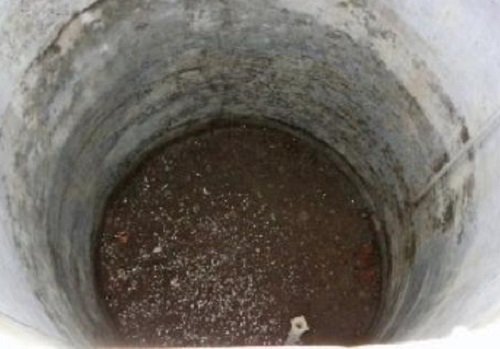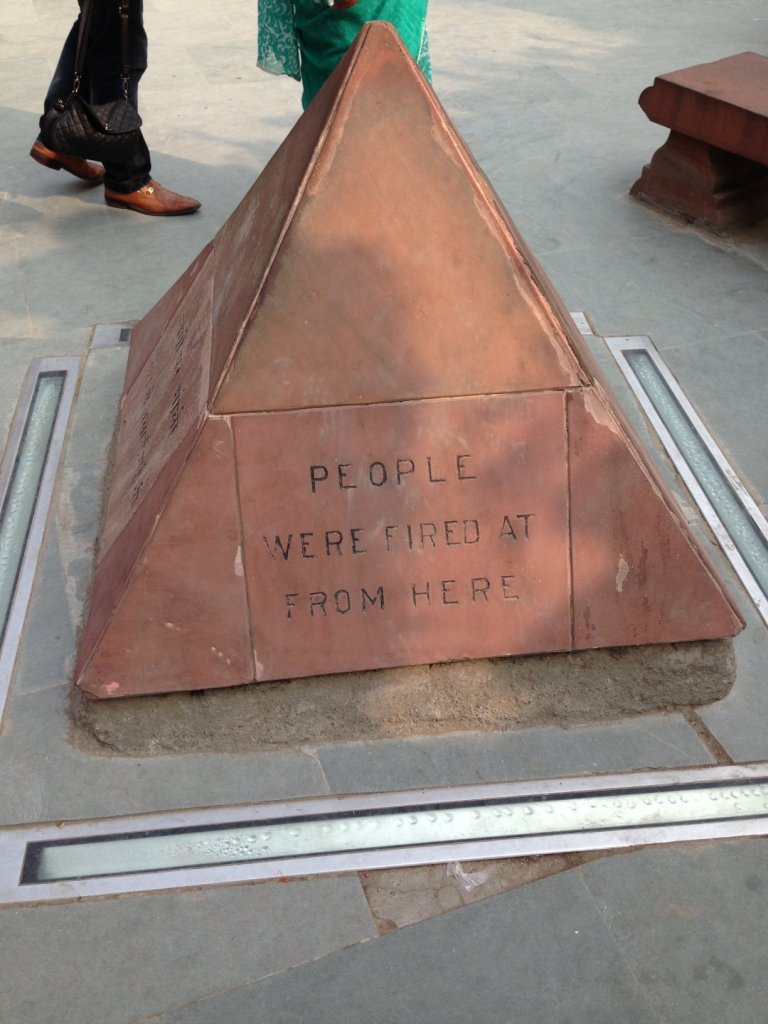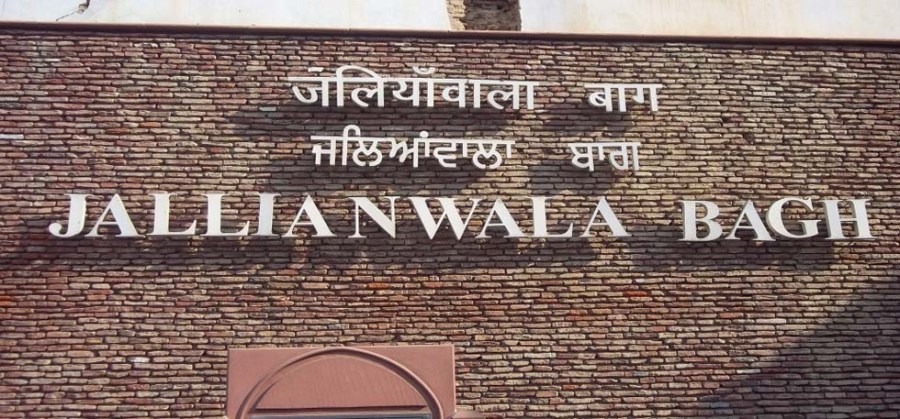Jallianwala Bagh, located in the city of Amritsar in the northern Indian state of Punjab, is a public garden that holds a tragic history. IOn April 13, 1919, British troops under the command of General Reginald Dyer opened fire on a peaceful gathering of unarmed civilians who had gathered to protest against the oppressive policies of the British Raj. The firing lasted for about 10 minutes and killed hundreds of people, including women and children. Many more were injured or died later due to lack of medical care. The firing was ordered by an officer of the British colonial power, General Dyer.

On April 13 ─ the day of Baisakhi festival ─ a meeting was called in the afternoon at the Jallianwala Bagh, a ground enclosed on all sides. Thousands of people, many of whom had come from surrounding villages to the fairs in Amritsar and were unaware of the ban order, gathered in the meeting.
Suddenly Dyer appeared there with troops and without any warning to the people, ordered firing on the completely peaceful and defenceless crowd. The fusillade continued till Dyer’s ammunition ran out.
Today, the bullet marks on the walls of Jallianwala Bagh serve as a grim reminder of the brutality of India’s colonial past. The garden has been converted into a memorial to honor those who lost their lives in the massacre. Visitors can see the bullet-ridden walls and a well into which many people jumped to escape the gunfire. The Martyrs’ Gallery houses photographs and paintings depicting the tragedy and its aftermath. The memorial was inaugurated in 1961 by Dr. Rajendra Prasad, the first president of India.
The Jallianwala Bagh massacre was a turning point in India’s struggle for independence from British rule. It galvanized the Indian independence movement and led to a surge in nationalist sentiment.
… The disproportionate severity of the punishments inflicted upon the unfortunate people and the methods of carrying them out, we are convinced, are without parallel in the history of civilised governments, barring some conspicuous exceptions, recent and remote. Considering that such treatment has been meted out to a population, disarmed and resourceless, by a power which has the most terribly efficient organisation for destruction of human lives, we must strongly assert that it can claim no political expediency, far less moral justification. …
Rabindra Nath Tagore in his letter renouncing his knighthood after this massacre
Today, we have indulged ourselves into so much of day-to-day crap and modern problems of life that we have simply forgotten the sacrifices of our brave freedom-fighters because of whom we are able to enjoy our freedom. It’s sad that we haven’t yet learned from our mistakes and we wait for someone to sacrifice his life, his family, his comforts, his future for the people of our country to come together.

They did not die so that we can remember them twice a year. They died so that they could scar our hearts and make us strong and show us what must be done. They died to give us the courage to do what everyone was scared of. They showed us that death is not the end. It’s the future we must fight to protect and even die for, if it demands.
The bullet marks at Jallianwala Bagh are not only scars of history, but also symbols of courage and resistance. Unfortunately, we still did not learn from our mistakes. We still wait for someone to suffer or die in protest against the injustice. This makes me wonder is this the freedom, and is this the independence they died for? Our ancestors were way more brave, patriotic and focussed than we can ever be.
It’s still not too late to wake up, remember their sacrifices and work for the freedom they dreamt of and handed down to us. We must treasure it and not abuse it.
Today, Jallianwala Bagh is not just a site of historical significance but also a symbol of India’s resilience in the face of oppression. The bullet marks on its walls are a testament to the sacrifices made by those who fought for India’s freedom. As we remember the victims of the Jallianwala Bagh massacre, we must also acknowledge the ongoing struggles for justice and equality that continue to shape India and the world.



Very well said, my dear.
LikeLiked by 2 people
Thanks uncle
LikeLike
Well written.
LikeLike
Jalliamwala Bagh was a terrible happening. This post is a reminder to all of us who get too snug and absorbed in our life to care about anything else.
LikeLiked by 2 people
Yes, very true. We are forgetting the huge cost paid by our ancestors to achieve this freedom. We are becoming too complacent and the ‘chalta-hai’ attitude is killing us. This is posted by my son after his recent visit to Amritsar.
LikeLiked by 2 people
Excellent post!
LikeLiked by 2 people
Thank you! 🙂
LikeLiked by 1 person
You ask questions that are important for people in countries all over the world to ask themselves. In the United States we need to ask ourselves these sorts of questions too.
LikeLiked by 2 people
What I am saying is as Dr. Shahi Tharoor once said “let’s forgive but let’s not forget” because in doing so we are disrespecting the history, the sacrifices of the people on whose corpses we achived the freedom from over 200 years of British rule. What I am saying is that I don’t want my country to wage a war on them or demand for war reparations but rather remember it and not let it happen again.
Perhaps, there is not much difference if we were ruled by British or by any other rulers like Mughals. But what we miss is the point that government is meant to govern the country not rule it which is happening de facto. Well, one may argue that it’s a democratic country but everyone living here knows how do politicians get elected or take votes rather than earning them. And it’s not like no one knows it and I am the only one who realises that we are in a sinkhole and more we move, faster we sink. But nobody wants to do anything about it. We all are self-centered and think of ourselves, our families and not of the country.
Thanks for agreeing with me. And I would love to know about the similarities that you see in the USA. But I am actually under the impression that Americans are quite patriotic even though they are more a capitalist.
LikeLiked by 1 person
I have been there and it brings a somber feeling and a deep anguish looking at the bullet marks on the walls.
What irked me was the attitude of the crowd at the park. Instead of remembering the great sacrifices of the faceless braves, the new generation have made the place a picnic point. Not to mention the litter bugs.
Great article by Judhajit, it rekindled the memories of my visit.
LikeLiked by 1 person
Exactly its not a place to sit with family and chat about life. It’s there for remembrance. As Dr. Shashi Tharoor once said let’s forgive but let’s not forget. And what I am asking is constant kindling fire of patriotism throughout one’s life instead of too much patriotism for twice a year rather. It is one’s duty to be patriotic towards his/her country and serve the country any way possible. I am not talking about going into war for the sake of patriotism but if we all stop exploiting our own country for our own greedy motives, for once; then there might be a chance that we may be able to create a future where we and our next generations can survive without worrying about the resources and other necessities and will able to lead a peaceful and healthy life. That’s my vision of the patriotism. Well, being a human being I even find own benefits in it. On the other hand we have always been the most parasitic species of the nature.
Uncle, thank you for agreeing with me. And may more and more people read and realise that they misunderstood the idea of freedom for which our, and their ancestors burnt their own bodies and souls for since, they found it on a platter. Thank you….
LikeLiked by 1 person
Indeed! Like someone said, “if you forget the lessons of history, you are bound to repeat them”.
LikeLiked by 2 people
Yup, so true sir and thanks for agreeing to it
LikeLiked by 2 people
I have been there, but that place did not make me feel the anguish I feel today after reading this.
LikeLiked by 1 person
See, exactly that’s what I meant, we fight for religions: churches, temples and mosques, but we tend to forget the heroes, who gave us these rights and conditions that we fight for today. Thank you for agreeing.
LikeLiked by 2 people
Every time I come up punjab I visit here. It still makes me shiver thinking about what happened….
LikeLiked by 1 person
Whenever I visit the place, it brings a sad, somber feeling and I can literally hear the cries of innocent people caught unaware in the firing. The bullet marks on the walls are the grim reminder of the tragedy and urge us not to forget the sacrifices made by thousands of people for India’s Independence.
LikeLiked by 1 person
Yes, very true. I hope that we don’t forget their sacrifices. Thanks.
LikeLiked by 2 people
This absolutely correct and well written.
LikeLike